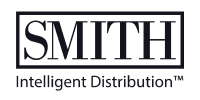Download this article in PDF format.
After months of uncertainty over escalating tariffs, the U.S. and European Union struck a framework deal that imposes a 15% tariff rate on most EU goods. This new agreement replaces a potential 30% tariff and is being positioned as a “step toward stability” between two of the world’s largest trading partners.
The deal includes exceptions for aircraft parts, semiconductor equipment and certain pharmaceuticals, but the auto, steel and life sciences sectors could face new cost pressures as a result of these new developments.
Here’s the Framework
Reuters says the agreement mirrors key parts of the framework accord reached by the U.S. with Japan, but that it also leaves “many questions open,” including tariff rates on spirits. The deal also calls for $750 billion of EU purchases of U.S. energy in the coming years and hundreds of billions of dollars of arms purchases.
“German Chancellor Friedrich Merz welcomed the deal, saying it averted a trade conflict that would have hit Germany's export-driven economy and its large auto sector hard,” the publication reports, noting that German carmakers, VW, Mercedes and BMW were hit hard by the current 27.5% U.S. tariff on car and parts imports.
According to the White House, the deal also includes these terms (among others):
- Tariff barriers. The EU will work with the U.S. to eliminate tariffs in various sectors and will provide meaningful quotas for other products.
- Non-tariff barriers for U.S. industrial exports. EU will work to address a range of U.S. concerns related to various EU requirements that are burdensome to U.S. exporters.
- Non-tariff barriers for U.S. agriculture exports. The U.S. and the EU intend to work together to address non-tariff barriers affecting trade in food and agricultural products.
- No free riders. The two entities will establish strong rules of origin to ensure that the benefits of this agreement flow directly to and from one another (not to third countries).
- Barriers for digital trade. The U.S. and the EU intend to address unjustified digital trade barriers. For example, the EU won’t adopt or maintain network usage fees.
- Military equipment. The EU agreed to purchase more U.S. military equipment.
Establishing a New Baseline
The fine details of this new deal are still being ironed out, but its impact on the manufacturing sector and supply chains as a whole are already being dissected and discussed. In “How will the EU-US Trade Deal Impact Manufacturing?,” Matt High discusses the deal’s likely impacts to the manufacturing landscape on both sides of the Atlantic.
“This shift has direct consequences for manufacturers, exporters and policymakers. While the White House claims it ensures fairer trade, European businesses face higher costs and changing supply chain demands,” High writes. “Across industry sectors, from automotive to pharmaceuticals, the effects are immediate and concrete.”
At the heart of the agreement is the introduction of a 15% flat tariff on goods entering the U.S. from the EU. This replaces a threatened 30% rate, High writes, but is still more than double the levels applied before 2024. “The new rate affects a broad cross-section of goods, prompting concern from key European manufacturers,” he says.
European manufacturers may now have to adapt to higher costs and altered market access without parallel gains. “The immediate financial hit is already being felt,” High writes. “Volkswagen reports a €1.3 billion ($1.5 billion USD) drop in first-half profits, citing the new tariff regime.”
The new U.S.-EU trade deal may circumvent a larger conflict, but it also adds pressure to global supply chains. Key sectors like autos, steel and life sciences may face higher costs, for example, and manufacturers will have to reassess their sourcing and production plans. While some industries received exemptions on this round, the broader impact of the 15% tariff is still unfolding.








